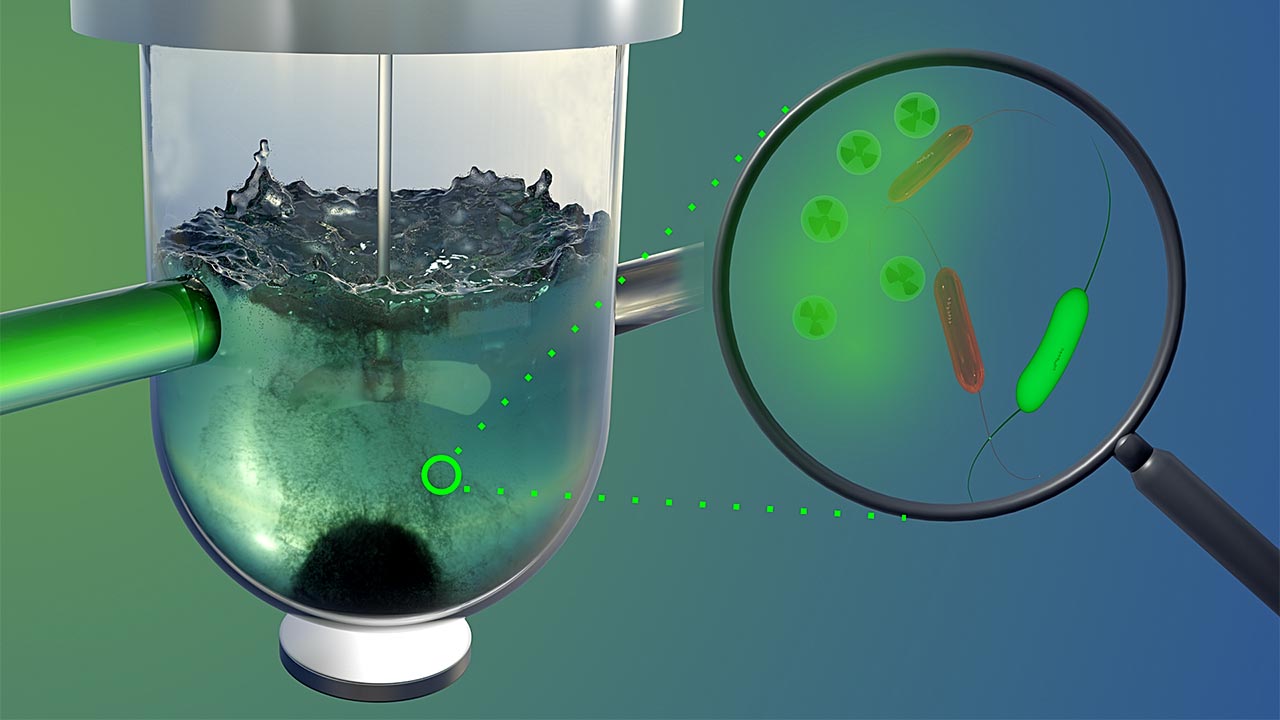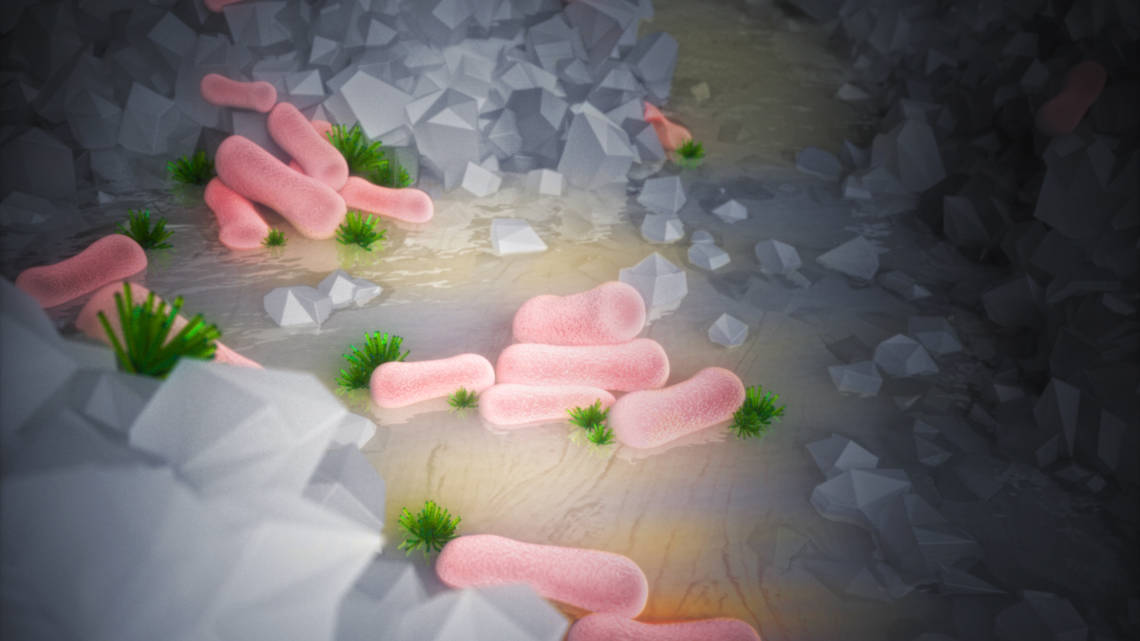Wastewater treatment with magnetotactic bacteria
Microorganisms that react to magnetic fields can eliminate contamination with heavy metals.

A problem with many former mines is that their floodwater is usually contaminated with heavy metals, in the case of uranium mines, for example, with uranium. Environmental biotechnology has long been developing approaches to filter out these heavy metals with the help of microorganisms. Researchers at the Helmholtz-Zentrum Dresden-Rossendorf (HZDR) have now discovered a promising bacterium for this purpose.
Magnets to fish out bacteria and uranium
Magnetospirillum magneticum belongs to the group of so-called magnetotactic bacteria: They possess magnetosomes, membrane-enclosed magnetic crystals, by means of which the microbes orient themselves to the earth's magnetic field. They can thrive in a broad pH spectrum and at high uranium concentrations - typical conditions in the context of mining water. And not only that: the bacteria absorb uranium with their metabolism and incorporate the heavy metal almost exclusively into their cell wall.
Thanks to their magnetotactic properties, it is possible to use a magnet to remove the bacteria from the water together with the uranium they bind. "This is also conceivable on a large scale in near-surface waters or by pumping the water out of underground mines and passing it on to pilot wastewater treatment plants," explains Evelyn Krawczyk-Bärsch of the HZDR. The approach is also likely to be interesting from an economic point of view. Chemical treatment methods are expensive. Biotechnological alternatives have not been cheaper because uranium-absorbing bacteria have high nutrient and energy requirements. M. magneticum, on the other hand, is extraordinarily undemanding.
Potential application for plutonium repository
In the Journal of Hazardous Materials, the researchers report in detail how the bacteria incorporate uranium into their cell membrane. "Our results show that in magnetotactic bacteria, peptidoglycan plays the main role during uranium uptake," Krawczyk-Bärsch reports. This finding is new and unexpected in this type of bacteria, he said.
M. magneticum could also be interesting with regard to the search for a final repository for radioactive waste such as plutonium. The way in which the bacterium handles iron molecules could indicate that it could also take up uranium nucleotides in a similar way. It may be possible to remove plutonium from contaminated water in a similar way to uranium.
bl


